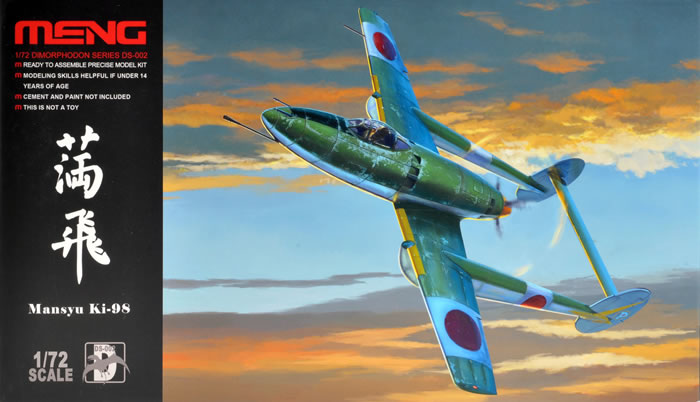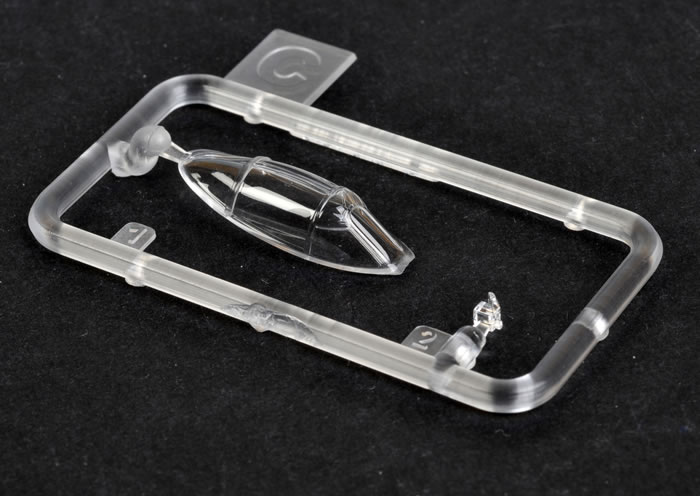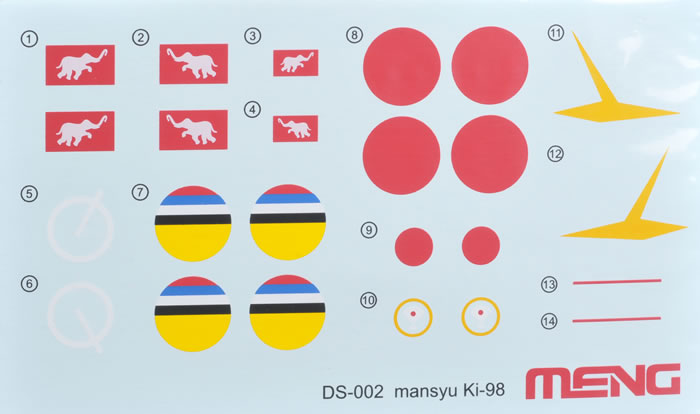Mansyu Ki-98

Meng Model, 1/72 scale
S
u m m a r y |
| Catalogue Number and Description: |
Meng Model Kit No. DS-002 - Mansyu Ki-98
|
| Scale: |
1/72 |
| Contents and Media: |
47 parts in grey plastic and two parts in clear; decals for three hypothetical markings. |
| Price: |
TBA |
| Review Type: |
FirstLook |
| Advantages: |
High quality mouldings; nice level of detail; interesing and unusual subject. |
| Disadvantages: |
One piece canopy |
| Conclusion: |
This is a high quality model with a decent level of detail and very good surface features. |
Reviewed by Brett Green

HyperScale is proudly supported by
Squadron
The Ki-98 was a proposal by the Manchurian-based Mansyu company for a single-engine twin boom pusher aircraft in the ground attack role.
Development of the type began in 1943, but work had only commenced on a single prototype by war’s end. The incomplete prototype was destroyed by Japanese forces at the end of the war, along with drawings and documentation.
The Ki-98 would have been armed with two 20 mm and one 37 mm cannon. The engine was intended to be the 2,200 horsepower Mitsubishi Ha-211 Ru radial, delivering a top speed of more than 700 km/h.
The fuselage was based on the successful Japanese Shinden fighter, while the twin-boom layout was intended to offer similar aerodynamics to the P-38 Lightning.

Indeed, the Lightning-esque shape of the vertical tail surfaces and rudder is unmistakable.
We have seen plenty of Luftwaffe ’46 designs brought to life as plastic models, but Japanese “paper projects” are not as common.
Meng is a new company from China that produces both military vehicles and aircraft models. This is actually Meng’s second oddball Japanese release, following its 1:72 scale Kayaba ramjet fighter earlier this year.
Meng’s 1:72 scale Mansyu Ki-98 comprises just 47 parts in grey plastic and two parts in clear; with decals for three hypothetical markings. Moulding quality is excellent, with no flash and the small number of ejector pin marks generally placed where they will not be evident on the finished model.
The plastic is smooth; panel lines consistent, crisp and quite fine (not as petite as Tamiya, for example, but definitely sharper than Airfix); and sprue attachment points relatively slender.
Despite the small number of parts, detail is pretty good. The cockpit features a tub with side consoles and a couple of bumps representing rudder pedals, a seat (no harness), instrument panel with raised bezels, and a control column.
Undercarriage legs are one piece each, with oleo scissors moulded in place. The forward and main landing gear bays are all boxed in.
Not surprisingly, control surfaces are moulded with the wings and tail planes in neutral positions. Trailing edges are realistically sharp. The wings are broken down into a single lower centre section (that should correctly set the dihedral), two upper outer sections with the lower parts of the ailerons and outer flaps moulded in place (this helps with the sharp trailing edges), and one outer lower wing insert for each side.

Vents at the front and back of the pod are moulded solid, but they should look suitably realistic after a simple black wash.
The canopy and gunsight are supplied as clear parts. The main canopy and windscreen are moulded as a single part, so you’ll need to carefully take to the plastic with a razor saw if you want to display the cockpit.

The instructions are laid out over 12 steps and ten fold-out pages. Assembly directions are quite clear, using exploded view drawings and a small amount of text.
As the real aircraft never flew, you can suit yourself to camouflage and markings.

Meng has included three options o their decal sheet as a starting point, all from the end of 1945:
-
Imperial Japanese Army with upper surfaces in Nakajima Green, lower surfaces in bare metal, and wing bandages for the Hinomaru.
-
Manchukuo Air Force. Overall bare metal with yellow spinner.
- Royal Thai Air Force. Green disruptive mottle over Dark Yellow on the upper surfaces, IJA Grey Green below.
.
Meng’s 1:72 scale Mansyu Ki-98 is a high quality model with a decent level of detail and very good surface features. The unusual subject matter will relieve the modeller from the onerous burden of accuracy too. Building this kit should be a very enjoyable flight of fancy.
Thanks to Meng Model for the sample

Text and Images Copyright © 2012 by Brett Green
Page Created 16 July, 2012
Last updated
17 July, 2012
Back to HyperScale Main Page
|
